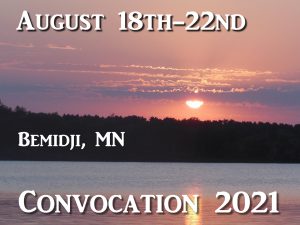I‘ve referred to this before, but it has been too little noticed how not only later prophets such as Jeremiah and Daniel, but Isaiah himself was aware of a typology within his own prophecy that was known to point to a greater consummation beyond the contemporary threat (in his case, the Assyrian threat). Here is something you’ll not see in many commentaries: Isaiah shows an awareness in Isa 13-14 that the present Assyrian of Isa 9 & 10 will be superseded by the ultimate expression of evil in the king of Babylon, the figure used to project the primordial “Lucifer,” much in the way that Ezekiel will use the king of Tyre in Eze 28 to project the same. Notice, however, that Isaiah sees the judgment on the king of Babylon as executed by the Medes in Isa 13:17-19. Then, after the elaborate description of the king of Babylon as foreground for Satan in Isa 14, it is again the Assyrian in verse 25 that is broken in connection with Israel’s salvation at the day of the Lord. The very one who tread down Jerusalem (the historical Assyrian never took Jerusalem) will himself be trodden down (speaking of his armies) on the Lord’s mountains in the day of Israel’s redemption. We see the same thing in Eze 38-39. It is the same event. The Assyrian is bigger than himself. He is also Gog of whom all the prophets of Israel have spoken. (Eze 38:17)
Notice the mutual language of Isaiah and Jeremiah concerning the yoke and burden that departs off of Israel’s shoulder at the day of the Lord when the final oppressor is destroyed. This is attributed to the Assyrian in Isa chapters 9 & 10, but particularly in Isa 14:25. However, in Jer 30:8, 14, the same language is applied to a yet future ‘cruel one’ who is destroyed in the day of Israel’s deliverance (Jer 30:7). Daniel will later show this to be the unequaled tribulation that ends in Israel’s salvation (Dan 12:1 with Mt 24:21; Rev 7:14).
It should be clear that Jeremiah, even from his limited standpoint, could not have had in mind the king of Babylon. Rather, he sees this last oppressor as a more distant figure who descends on Israel after they have returned to the Land and recovered their holy house (Isa 63:18, 64:10-11). Even from the limited foreview of Isaiah and Jeremiah’s standpoint in history, the final tribulation (Jacob’s trouble), was seen to be the final desolation and ‘treading down’ of Jerusalem (Isa 28:18). This is a constant theme in the eschatology of the prophets (Dan 8:13) and is carried forward in the NT (Rev 11:2). I find it especially impressive that Isaiah represents the final destruction as taking place shortly after Israel has only recently recovered possession of their holy house (Isa 63:18; 64:10-11) when it is once more trampled down.
Jeremiah knew that Jacob’s trouble takes place well after the return that would be decreed by Cyrus, the liberator. That is why he is is taken aback with such astonishment to see a returned Israel in its greatest travail (Jer 30:5-7 with Mic 5:3; Isa 13:7-9; 26:16-18; 66:8). Even after the Jews have returned, and even after they have recovered their holy place, this is not to final felicity, but to further tribulation, even one that eclipses all others. This stands in such seeming contradiction to the glories that would have naturally been expected in connection with most of the prophecies of return. It is little wonder why those returning under Ezra and Nehemiah were surprised and disappointed at how far short their experience of return fell of their understandable expectations.
It is not too different today. The order of return in relation to the day of the Lord was and remains a mystery for this very reason: Most of the prophecies of return imply an immediate deliverance unto final glory, but there are a select few that contemplate a preliminary return in unbelief (short of the righteousness of the New Covenant) that expect further covenant discipline before the final redemption (see Jer 30:3, 6-7; Zeph 2:1-2; Eze 22:19-22; 38:8 with Dan 12:1, 11; Mt 24:15-16, 21; 2Thes 2:4; Rev 11:2). Significantly, these few prophecies (there may be others) represent a return (in unbelief) that has only recently occurred when the final tribulation comes. Perhaps it is because Jeremiah had not himself fully understood or expected this order in the return that explains why he is so stricken and taken aback with such an astonishing vision of a yet further and unequaled tribulation, even after an initial return (Jer 30:3-7 with Dan 12:1 etc.). This is the same astonishment and wonderment that many feel today when they are confronted with the prospect of such a judgment that includes even a short exile of flight into the wilderness of the nations (Mt 24:16 with Rev 12:6, 14). Why, they ask, would God so miraculously return His people to their ancient homeland, as a nation among nations, only to deliver them once again into the hands of their enemies?
Remember too, Jeremiah would have known Isaiah’s earlier prophecy that Babylon would be judged by the Medes and succeeded by the great king Cyrus, whom God calls by name. So certainly Jeremiah sees the final climax of Jacob’s trouble well beyond the limits of the 70 years and the dominion of Babylon. They are back in the Land when Jacob’s trouble begins. Interestingly, they are only “recently” back in the land from the long exile when the final tribulation comes (see Eze 38:8). In Isa 63:18, the final desolation and treading down of Jerusalem comes at a time when the Jews have only recently recovered their holy places (see also Isa 64:1–11). For Daniel, the unequaled tribulation is spoken of as 70 7’s beyond the first return, but with no express anticipation or mention of yet further exile of ‘many years’ (Eze 38:8). The long exile following the Roman destruction and banishment would extend for “many generations” (Isa 61:4), but this is only hinted at and not easily detected by those living before the Roman exile. Nor would we expect that Zechariah and the other post-exilic prophets would have seen a further exile, other than the short tribulation spoken of by Daniel. According to the literature between the testaments, the Jews looked for a tribulation that would be inflicted by Rome, but expected it to last no more than the very brief period (the 3 1/2 years) described in Daniel’s prophecy. All of this combines to make the modern return of Israel all the more a puzzlement to those who have difficulty conceiving that the present state is destined to pass into a time of further desolation before the full and complete return that accompanies the Lord’s return.
As much as we know that Jeremiah had Isaiah’s prophecy ready to hand, it is clear that he would have seen Jacob’s trouble as occurring only sometime AFTER the liberator, Cyrus, had decreed the return from Babylon. This pushes the fulfillment to at least sometime beyond the end of the 70 years. Since he would not have known Daniel’s later prophecy of the 70 weeks, it is interesting to consider how far beyond the return that Jacob’s trouble would have been imagined. We cannot assume with many commentators that the king of Babylon is the “yoke of the cruel one that is broken off of Israel’s neck” (Jer 30:8, 14), because the return envisioned is after the return but before Israel’s deliverance. But for our purpose here, I’m wanting us to underscore the fact that Jeremiah uses nearly the same exact language of this final oppressor that Isaiah uses for both the Assyrian and the king of Babylon. This demonstrates an awareness that the prophets had of an implicit typology of a final Antichrist that went beyond their contemporary situation. Many recognize and acknowledge this in hindsight, as belonging to the nature of prophetic revelation. That is, of course, obvious, but I’m saying that the evidence makes plain that the prophets themselves had to have been fully aware of this in their own day. How else can Isaiah speak beyond the Assyrian to the king of Babylon and beyond Cyrus to a final oppressor that Jeremiah will also put beyond the captivity, and Daniel will put at the end of a long line of oppressors. But Isaiah and Jeremiah show this understanding in their own prophecies before Daniel makes it so clear.
The post-exilic prophets also show their awareness that the present time of partial blessing will at length give way to a further crisis that ends in the day of the Lord. Then will ‘all Israel’ be saved, and then will ‘all Israel’ return, with none left behind (Eze 39:28). Zechariah is very clear concerning this further crisis and subsequent world wide return. How commentators can content themselves with a post-Babylonian fulfillment of the return prophecies when the post-exilic prophet Zechariah sees beyond to the greater return at the day of the Lord is simply without excuse. There was no thought among the prophets that the present return was anything more than a ‘day of small things.’ At best it was a down payment, an ‘already’ of partial fulfillment that leaves a ‘not yet’ of much greater glory to come in connection with the final and complete return that comes only AFTER the day of the Lord.
This amazing overlap and repetition on themes that the prophets themselves realized went well beyond their own contemporary circumstance, opens our eyes to an amazingly rich and varied typology that is consistent and definite. We see this in how the prophets would apply the same language of finality to a succession of oppressors, all bearing the same diabolical image. I personally believe this pre-understanding underlies Daniel’s vision of the succession of gentile powers reaching to the final Antichrist, what Paul will call the “mystery of iniquity.” It is a generic and organic phenomenon that moves through history to its climax in the final “man of sin.”
This is especially clear in Paul’s reference to the Assyrian / Antichrist in Isa 11:4, whose destruction starts the millennium. He quotes the Septuagint, which renders Isaiah 11:4, not as the destruction of the “wicked” (plural) in general, as might appear from our translations, but the Septuagint has “the Ungodly One.” To show that an individual is in view, the Septuagint uses capital letters. We see this in some translations of 2Thes 2:8 to show dependence on the Septuagint and also to show Paul’s interpretation and application.
Clearly, according to Paul, Isa 11:4 is the personal Antichrist whom the Lord destroys by the Spirit of His mouth at His premillennial return (compare Isa 11:4; 30:31; 31:8; Dan 8:25; Rev 19:15). This means that Isa 31:8 is most certainly the AC who is destroyed by nothing less than the sword of the Lord’s mouth, and Daniel is well aware that this is speaking, no less, of his ‘little horn / king of fierce countenance.’ Isaiah’s close association of the Assyrian in Isa 14:25 with the king of Babylon (if they are not indeed identified as the same), and Daniel’s awareness that Isaiah’s “Assyrian” is to be identified with the little horn that rises up in a northern region that was one of the four kingdoms that came out of Alexander’s divided kingdom (Dan 8:9). This may hold a further clue to the territorial aspects of the origins of the Antichrist, as one who begins as a little horn (kingdom) that swiftly comes to much greater prominence and power during a time of tranquility (Dan 11:24) through a ‘league’ that is made with him’ at that time (Dan 11:23). Interestingly, his rise comes through “a small people” (Dan 11:23). I still think it worthy of our consideration if this might have something to do with the Palestinian problem.
When we get time, I want to show how parallel the same language for the Assyrian is for Ezekiel’s vision of Gog and Magog as well. Surely, it is profound puzzle of interplay of type and anti-type that weaves itself all through the prophets to focus on the last gentile aggressor as the composite fullness of all the historical types. Unfortunately, commentators tend to satisfy themselves quite short of the goal and implications of these prototypical figures by attributing to past history a fulfillment that falls far short of the attendant details. The destruction of a final gentile oppressor in everywhere bound to the great transition of the day of the Lord, and for the prophets there is nothing in history that counts as the day of the Lord if it falls short of the comprehensive fulfillment of the covenant in every detail.
Any would be fulfillment that stops short of that great transition can NOT count as sufficient fulfillment! Why isn’t this more clear? The answer is what it must mean for a literal restoration of the nation of the natural branches. No other solution treats the plain language of scripture as the infallible Word of God. A past fulfillment that is anything more than a partial earnest on what is yet to come at a future day of the Lord (Christ’s second coming) is a futile effort to try to “save” the apparent failure of prophecy by positing the untenable solution of spiritual interpretation. The effort is one that makes Jews and liberals to blush at the lengths the replacement minded interpreters are prepared to go to defend their view of the inerrancy of scripture while denying the day of the Lord salvation of Israel (the natural branches). It is a question that will not go away, and one that the events of the end will utterly expose, even as the present return has been counted as an event of prophetic non-significance, an accident of history, the natural evolution of Jewish longing and resolve, etc. Such a view cannot be merely an issue of hermeneutics. There must be an underlying moral component that is going virtually undetected by the prophets of the church.
Another thing an overview of the prophets will address is the problem of how the day of the Lord can be at once represented as ever imminent, yet preceded by clearly foretold events. This has puzzled many. It is interesting to me how the different prophets, some living centuries apart, would present the day of the Lord as always “near” or “at hand,” despite the manifest passage of significant periods of time between one prophet to another. This shows an ever present imminence of the judgments of that great day that does not assume a strictly chronological imminence. This suggests a distinction between ‘chronological’ imminence, which cannot be true until after certain foretold events have taken place, and an ‘existential’ imminence, from which all persons stand at an equi-distance. In this sense, the day of the Lord is always impinging on the present, since the judgments of that day, like the blessing of that day, are subject to be realized in a partial or first-fruits fashion at any given time when the covenant has been grossly neglected or truly honored (knowing, of course, that it can only be truly honored through Christ). The NT reflects this awareness of the ever present imminence (the ‘at hand-ness’) of a day that is obviously preceded by knowable signal events (2Thes 2:3 etc.)
Reggie Kelly, Nov 2013 {edited by Samuel Clough}




